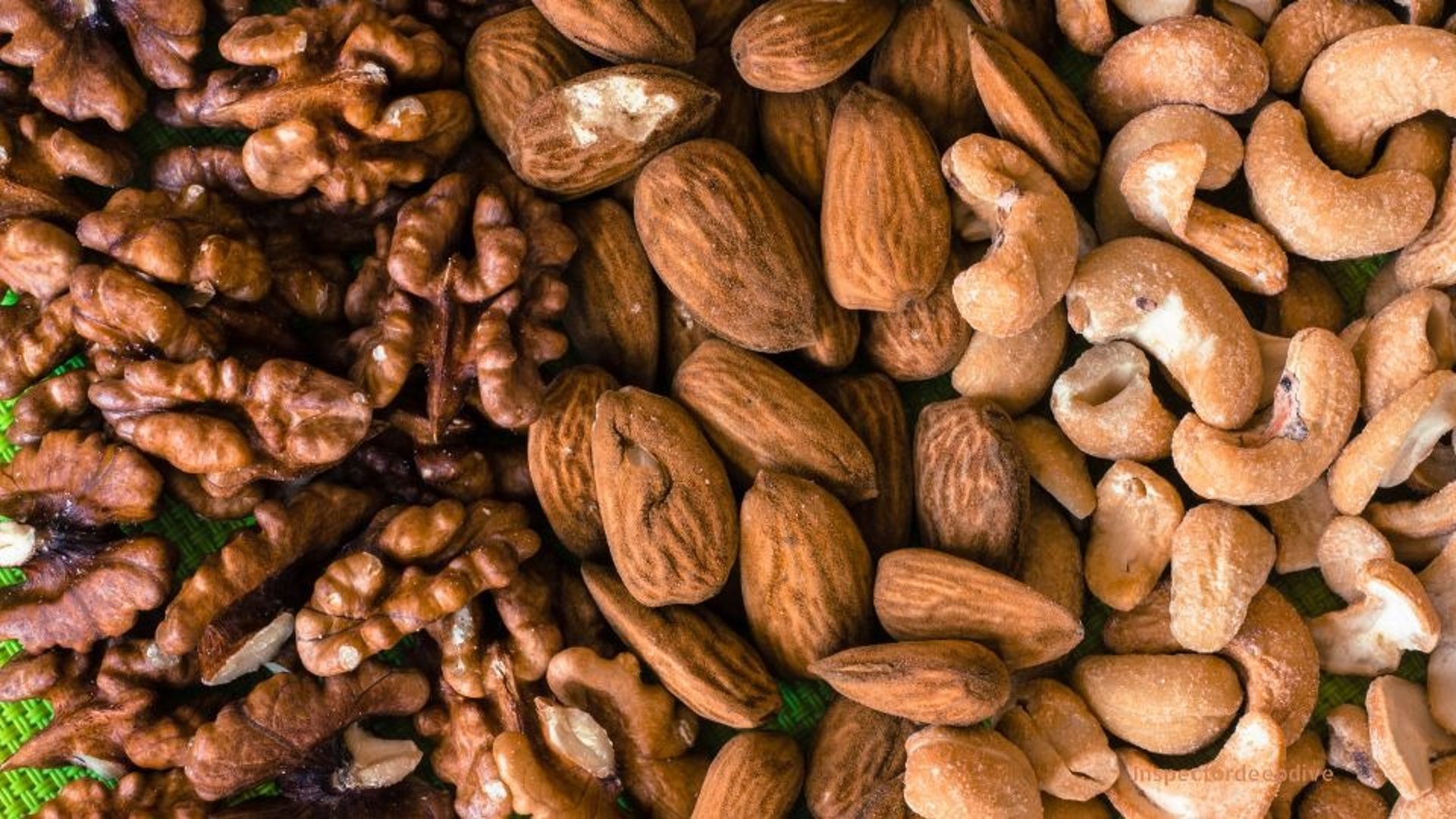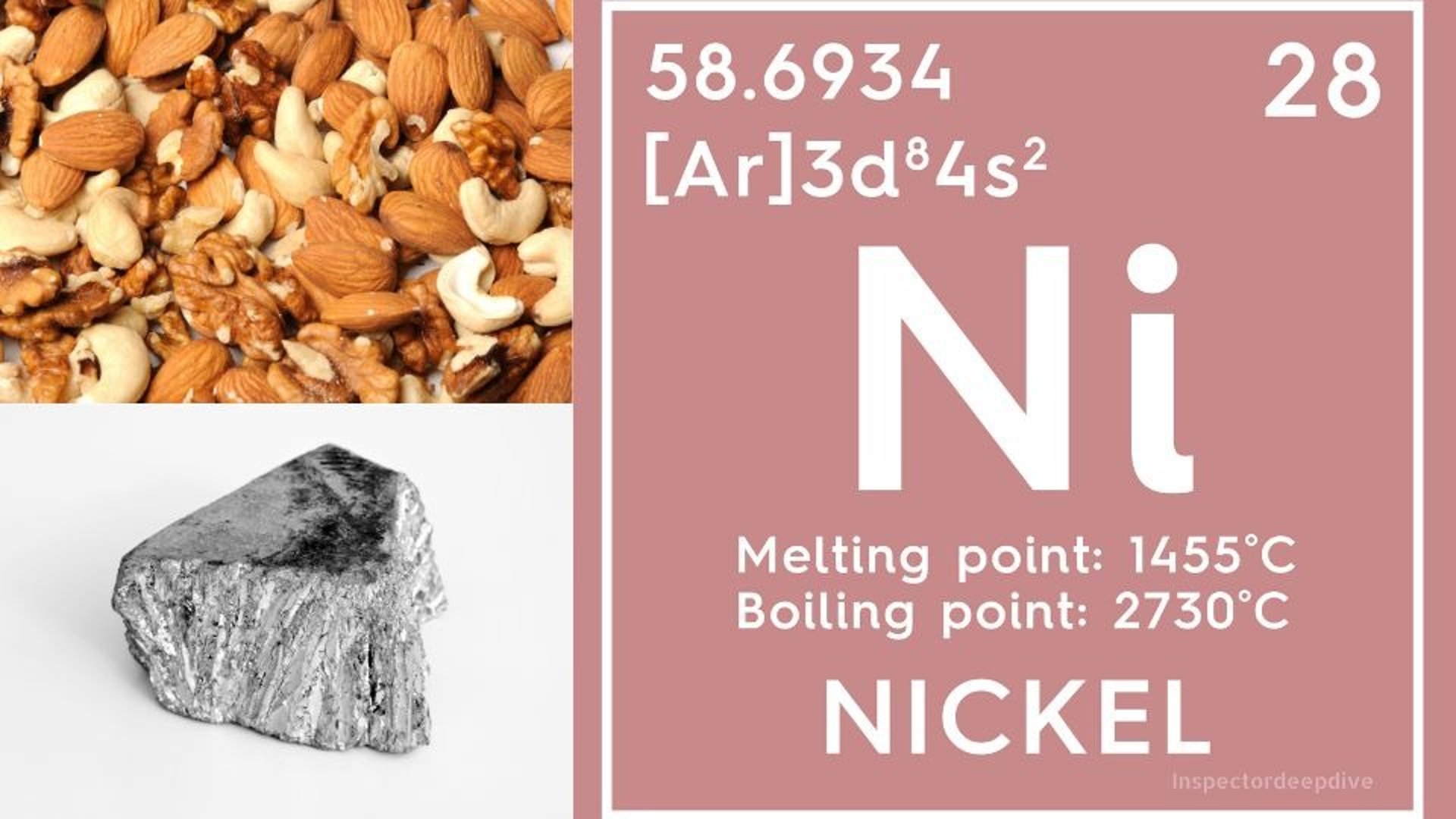
Nickel Basics: Absorption, Interactions, and Who May Benefit

Nickel Basics: Absorption, Interactions, and Who May Benefit
What Is Nickel?
Definition: Nickel is a trace transition metal found throughout the environment and present in many foods.
Context: In biology it appears mainly as nickel ions and is essential for some microbes and plants; its clear essential role in humans is not firmly established.
What Does Nickel Do to the Body?
Primary roles: Nickel is involved in certain enzymatic reactions in lower organisms and may influence iron metabolism and some cellular signaling pathways in humans.
Practical impact: Animal studies link nickel to effects on hemoglobin, bone, and glucose regulation; in humans the evidence for a required nutrient role is limited but suggestive.
How Is Nickel Absorbed?
Absorption: Dietary nickel absorption is generally low, typically under 10% when eaten with food.
Factors: Absorption increases when nickel is ingested in water or on an empty stomach.
Elimination: Nickel is rapidly excreted, mainly in urine, and does not strongly accumulate in most tissues.
Great Food Sources of Nickel
Nuts, especially peanuts, walnuts, almonds, cashews: High per serving
Seeds, such as sunflower, pumpkin, flax: Notable levels, particularly when consumed in large amounts
Legumes, including lentils, chickpeas, soybeans, kidney beans: Rich in nickel due to soil uptake
Soy products, like tofu, tempeh, soy milk, edamame: Reflect high legume content
Oats and oat-based cereals: Moderate to high, depending on source
Whole grains, such as whole wheat, brown rice, rye: Contain more than refined versions
Chocolate and cocoa powder: Naturally concentrate nickel; dark chocolate higher than milk
Dried fruits, including apricots, raisins, prunes: Elevated due to water removal
Vegetables, particularly spinach, lettuce, cabbage, onions, carrots: Variable, but can contribute significantly
Notes
Dried and processed plant-based foods (e.g., granola bars, trail mix, nut butter) often contain concentrated amounts due to ingredients and preparation methods
Nickel content depends heavily on soil and water conditions crops grown in nickel-rich soils have higher levels
For most people, dietary nickel is harmless and not a concern
A small subset may have nickel sensitivity or contact dermatitis triggered by high-nickel diets (systemic nickel allergy syndrome – SNAS), though evidence remains limited and debated
No supplementation needed nickel is not considered an essential nutrient for humans at this time.
Let me know when you're ready for the next mineral. We’re building a solid library.
How Much Nickel Do You Need?
Guidance: No official Recommended Dietary Allowance exists for nickel.
Typical intake: Typical diets provide roughly 70 to 400 micrograms per day.
Suggested ranges: Some experts consider intakes below 100 micrograms/day to be in the lower range and propose modest beneficial intake in the tens of micrograms, but clear human requirements are not established.
Signs You’re Getting Enough Nickel
Indirect indicators: Normal iron status and hemoglobin, stable metabolic function, and absence of symptoms seen in animal nickel deprivation.
Clinical testing: Routine clinical tests for nickel adequacy are not standard practice.
Signs of Nickel Deficiency
Reported signs (mainly from animals): Reduced hemoglobin and red blood cell counts, impaired growth, altered bone strength, and sensory changes.
Human evidence: Clear deficiency symptoms in healthy humans have not been well defined.
How Long to Fix a Deficiency?
Short-term effects: Changes in biomarkers (iron handling, hemoglobin) may appear within weeks after correcting low intake in studies.
Long-term recovery: Structural outcomes like bone changes require months to years and depend on multiple nutrients and interventions.
Supplements: What You Should Know
Availability: Nickel appears in some multivitamins and trace-mineral supplements in microgram to low milligram amounts.
Common doses: Typical supplemental amounts are small; daily intakes above about 1 mg are considered risky for routine use.
Label reading: Supplements: Check the label for elemental nickel amount and do not exceed recommended upper guidance without medical advice.
Risks of Too Much
Oral toxicity: Oral toxicity is uncommon at dietary levels, but high doses can cause nausea, vomiting, and other gastrointestinal symptoms.
Allergy risk: People sensitized to nickel can develop or worsen dermatitis from dietary exposure in some cases.
Occupational risks: Inhaled nickel compounds (industrial exposures) carry serious respiratory and cancer risks; these risks are not comparable to normal dietary exposure.
Who May Benefit Most from Supplements?
Potential groups: Very rare cases of demonstrated deficiency in controlled settings or specific experimental uses; routine supplementation is not generally recommended.
Caution groups: People with nickel allergy, kidney impairment, or certain occupational exposures should avoid supplements unless advised.
Medication Interactions
Iron and absorption: Medication interactions: Iron status affects nickel absorption; low iron increases nickel uptake.
Disulfiram: Disulfiram can reduce nickel absorption.
General advice: Check with a clinician or pharmacist before combining supplements with medications.
Lifestyle Factors Affecting Nickel Absorption
Diet composition: Iron-rich meals and vitamin C (which aid iron absorption) may reduce nickel uptake.
Cooking tools: Cooking acidic foods in stainless-steel cookware can increase nickel content in food.
Gut status: Fasting and gastric conditions that increase solubility can raise nickel absorption.
Seasonal & Lifestyle Variations
Seasonal patterns: Intake varies with seasonal availability of plant foods and use of dried fruits and nuts.
Diet patterns: Plant-forward diets tend to supply more nickel than animal-heavy diets.
Cooking & Storage Effects
Leaching: Cooking & Storage: Acidic foods stored or cooked in nickel-containing utensils can pick up extra nickel.
Processing: Food processing and contamination from equipment may increase nickel content.
Common Myths About Nickel
Myth: Everyone needs nickel supplements.
Reality: Most people get enough nickel from food; supplementation is usually unnecessary.
Myth: Dietary nickel causes cancer.
Reality: Cancer risks are associated with inhaled industrial nickel compounds, not typical dietary exposure.
Fun Facts
Element facts: Nickel is element 28 on the periodic table and gives stainless steel its corrosion resistance.
Food surprise: Chocolate and some whole grains are among the richer dietary sources of nickel.
Environmental & Sustainable Sources
Soil link: Nickel in food reflects soil and water content; sustainable soil management influences food nickel levels.
Environmental impact: Nickel mining and refining have environmental costs; responsible sourcing and recycling of nickel-containing materials reduce impact.
Special Groups & Unique Needs
Nickel allergy: People with confirmed nickel allergy may benefit from dietary reduction under clinical guidance.
Kidney disease: Impaired renal function can alter nickel clearance; caution with supplements is advised.
Pregnancy and children: No routine recommendation for supplementation; follow clinician advice.
How to Track Your Nickel Intake
Food tracking: Food tracking: Log servings of high-nickel foods (nuts, legumes, chocolate, oats, dried fruits) to estimate intake.
Diet trials: For suspected nickel-related dermatitis, a monitored low-nickel diet for 4–6 weeks is sometimes used diagnostically.
Biomarkers: Urinary nickel can reflect recent intake in research settings but is not a routine test for everyone.
Nickel: Key Scientific Insights (Updated Through 2025)
Dietary Exposure & Bioavailability
Recent EFSA (European Food Safety Authority) monitoring (2024) confirms that plant-based diets, especially those high in legumes, nuts, seeds, and whole grains, contribute to higher nickel intake. Spinach, oats, and cocoa remain among the top sources. New data shows soil pH and agricultural practices significantly influence crop nickel levels (Journal of Agricultural and Food Chemistry, 2024).Nickel Allergy and Dermatitis
A 2024 multicenter study (published in Contact Dermatitis) found that cutaneous nickel allergy affects approximately 16% of the global population, with higher prevalence in women due to jewelry exposure. Oral nickel ingestion may exacerbate symptoms in sensitized individuals a condition known as systemic nickel allergy syndrome (SNAS). However, evidence remains mixed on low-nickel diets reversing chronic dermatitis (British Journal of Dermatology, 2024).Toxicity and Organ Impact
Long-term inhalation of nickel compounds (especially in industrial settings) is reaffirmed as carcinogenic to humans (IARC Group 1). Recent rodent studies (Toxicological Sciences, 2024) show renal and hepatic oxidative stress from prolonged oral exposure, though dietary nickel alone did not reach toxic thresholds in normal consumers.Endocrine Disruption Potential
Emerging in vitro and animal data (Environmental Health Perspectives, 2024) suggest nickel may act as a weak endocrine disruptor, interfering with steroidogenesis and thyroid hormone pathways. Human relevance remains under investigation.Gut Microbiome Interactions
A 2025 pilot study (Nature Communications) reported that high nickel intake alters gut microbiota composition in sensitive individuals, potentially increasing intestinal permeability supporting hypotheses linking nickel to low-grade inflammation in susceptible populations.Regulatory Updates
The U.S. FDA has not changed its stance on safe nickel intake, but the European Commission (2024) proposed stricter limits on nickel in reusable metal food containers and cookware due to leaching concerns during cooking.Biomonitoring Data (NHANES Update 2023–2024)
Blood and urine nickel levels in the U.S. population remain stable, with slightly elevated levels in vegans and vegetarians. No significant correlation was found between dietary nickel and clinical disease in the general population.
Conclusion (Inspector Deep Dive Note):
Nickel is unavoidable in food and environment. While essential in trace amounts for some animals, no human requirement has been established. For most, dietary nickel poses no risk. For the allergic or hypersensitive, awareness matters. We continue monitoring new findings.
Summary
Bottom line: Nickel is a ubiquitous trace metal with suggested roles in enzyme activity and iron handling based mainly on animal and microbial data. Most people obtain enough from a plant-rich diet and do not need supplements. Oral toxicity at normal dietary levels is low, but sensitivity and occupational inhalation risks exist. If you suspect nickel-related allergy or unusual deficiency, consult a clinician before changing diet or taking supplements.
© 2025 food.InspectorDeepDive.com. All rights reserved. Content may not be copied or republished without permission.
This article is for informational purposes only. InspectorDeepDive.com does not provide medical advice. Always consult a licensed healthcare provider before making dietary or health decisions.
